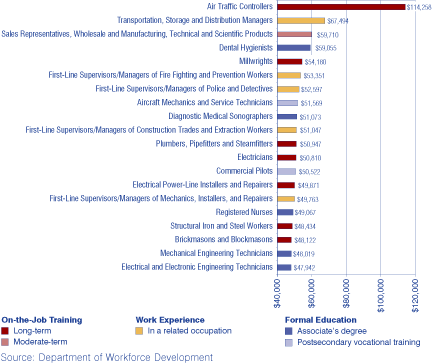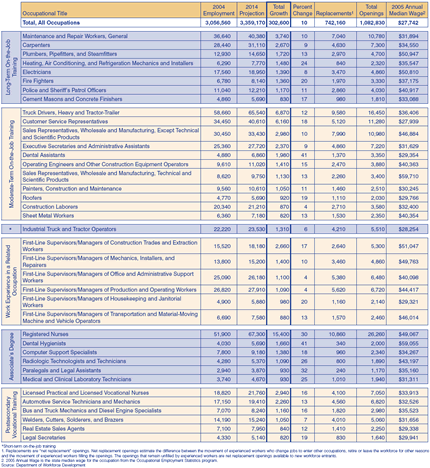More than Rocket Scientists Put a Man on the Moon
High-Wage, High-Demand Jobs with Two Years of Training or Less
How many workers did it take to put a man on the moon? Okay, I admit I don't know. But I do know that the stupendous achievement involved many more folks than the scientists who envisioned and engineered the lunar module and the rockets that delivered that payload to the moon's surface. From the construction workers who built the launch pads and blockhouse, to the accounting and procurement staff who ordered the materials and handled the payrolls, to the crew who maintained the elaborate electronics used to track the mission, this task involved a web of people and occupations that stretched far and wide—both geographically and in terms of the industries and occupations involved.
High-tech occupations, and those requiring bachelor's or advanced degrees, are increasingly common in today's workplace. But many occupations with less extensive training requirements, perhaps better suited to the new entrant or dislocated worker, also offer competitive salaries (see Figure 1). These occupations play key roles in keeping our economy ticking along and supporting the long-term visions of business and industry.
Figure 1: Top 20 Highest Paying Jobs With Two Years Required Training or Less, Based on 2005 Median Wages
The Department of Workforce Development's Research and Analysis group has identified occupations with a “high wage” (i.e. above the state median wage) and those that are “high demand” (i.e. non-replacement growth of at least 100 projected jobs over 10 years). Fifty of these occupations have been identified as the “Hoosier Hot 50,” based on indexing using a combination of wages and growth; however, that leaves about 180 other occupations for consideration. The list includes many common “shortage” occupations frequently in the news—e.g. welders and nurses—but many others of which we hear less.
Table 1 is a partial list (view the complete list here) of the 112 high-wage, high-demand jobs that generally require two years or less of full-time academic training or experience (although some may require an apprenticeship lasting up to four years). Growth and replacement needs over a 10-year period for each occupation are summarized, along with annual wages (from the 2005 Occupational Employment Statistics survey) and typical experience/training required for the job.
Table 1: High-Wage, High-Demand Jobs That Require Two Years Experience or Less with Projected Employment Growth of at Least 800 Jobs, 2004 to 2014
Later this spring, the Research and Analysis group will make more information available on Hoosiers by the Numbers (www.hoosierdata.in.gov), allowing users to create customized lists of occupations based on wages, training/experience, occupational “family” or the industries using the largest proportion of workers in each occupation. Additional information on occupational projections and employment and wages by occupation is currently available on Hoosiers by the Numbers; meanwhile, more data on specific occupations (tasks, knowledge, skills and abilities required, training and education requirements, etc.) is available online at www.onetcenter.org.
Vicki D. Seegert, Advanced Economic and Market Analysis
Indiana Department of Workforce Development


